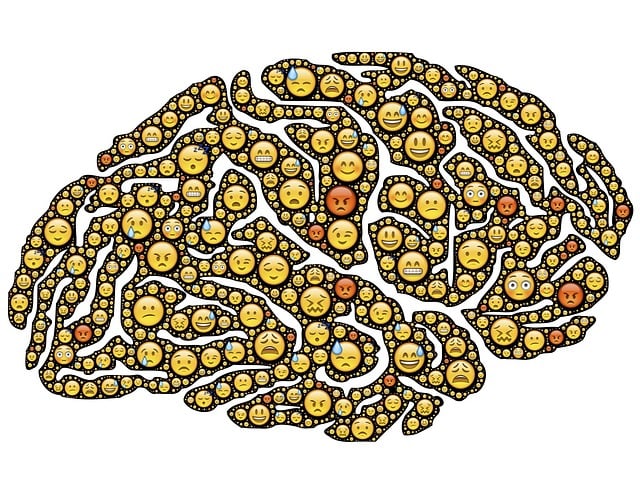Preventing Depression: Resources and Strategies in Colorado Springs
Depression in vibrant cities like Colorado Springs can be addressed through stress management, commu…….
In the heart of Colorado lies a vibrant city, Colorado Springs, where a unique and transformative approach to mental health care has emerged—Colorado Springs ADD-ADHD Evaluations Therapy (CS-ADDT). This innovative therapy program has gained recognition for its comprehensive assessment and treatment methods aimed at individuals with Attention-Deficit/Hyperactivity Disorder (ADHD) and related conditions. The article delves into the intricate world of CS-ADDT, exploring its various facets, impact, and potential to revolutionize the way we understand and support individuals with neurodiversity challenges. Through this exploration, we aim to equip readers with valuable insights into a therapy that is reshaping lives and fostering hope for a brighter future.
Definition: Colorado Springs ADD-ADHD Evaluations Therapy (CS-ADDT) is an advanced, multi-disciplinary approach to assessing and treating individuals with ADHD, including learning disabilities, executive function deficits, and related mental health conditions. It involves a meticulous evaluation process that goes beyond traditional diagnostic methods, incorporating cutting-edge psychological assessments, neuroimaging technologies, and individualized treatment plans.
Core Components:
Comprehensive Evaluation: CS-ADDT begins with an in-depth assessment that includes clinical interviews, standardized tests, and advanced neuropsychological evaluations. This thorough process aims to identify not just ADHD but also underlying strengths, weaknesses, and potential co-morbidities.
Neuroimaging and Brain Mapping: Utilizing state-of-the-art neuroimaging techniques, CS-ADDT professionals create detailed brain maps that visualize neural connectivity and function. This technology provides unique insights into the brain’s operation, enabling personalized treatment strategies.
Individualized Treatment: Each patient receives a tailored treatment plan considering their unique cognitive profile. Treatments may include behavioral therapy, coaching, medication management, and neurofeedback—a groundbreaking technique that teaches individuals to regulate their brain activity.
Multi-Disciplinary Team Approach: CS-ADDT involves a collaborative team of experts, including psychiatrists, psychologists, neurologists, and educators, ensuring a holistic and comprehensive approach to care.
Historical Context: The roots of CS-ADDT can be traced back to the late 20th century when ADHD was gaining recognition as a legitimate neurodevelopmental disorder. Traditional therapy approaches struggled to address the complexity of ADHD, leading to a quest for more effective methods. Colorado Springs, with its thriving mental health community and cutting-edge research institutions, became a hub for innovative treatments, eventually giving rise to CS-ADDT in its current form.
CS-ADDT has transcended geographical boundaries, captivating the attention of healthcare professionals worldwide. The global impact is evident through several key trends:
Increased Awareness: There is a growing recognition of ADHD as a prevalent neurodevelopmental condition, leading to heightened interest in effective treatment modalities.
Regional Adoption: Countries like the United States, Canada, and various European nations have embraced CS-ADDT, with specialized centers emerging to cater to diverse populations.
Research Collaboration: International collaborations foster knowledge sharing and research partnerships, contributing to the evolution of ADHD assessment and treatment protocols.
Cultural Adaptation: As CS-ADDT spreads globally, it undergoes cultural adaptation to suit different healthcare systems and community needs, ensuring its effectiveness across diverse settings.
The economic implications of CS-ADDT are significant, both for healthcare providers and society at large.
| Economic Aspect | Details |
|---|---|
| Market Size | The global ADHD treatment market is substantial, projected to reach USD 31.7 billion by 2026, driven by increasing diagnoses and the demand for advanced therapies. |
| Investment Opportunities | Private equity firms and venture capitalists have shown interest in CS-ADDT-related startups, reflecting the potential for innovation and growth in this sector. |
| Cost-Effectiveness | Research suggests that early intervention with personalized treatments like CS-ADDT can lead to long-term cost savings by reducing dropouts, improving academic performance, and minimizing future mental health issues. |
| Healthcare Systems Integration | Integrating CS-ADDT into existing healthcare systems can improve patient outcomes and reduce the economic burden of untreated ADHD. |
Technology plays a pivotal role in the evolution of CS-ADDT, opening new avenues for assessment and treatment:
Neuroimaging Technologies: Functional Magnetic Resonance Imaging (fMRI) and Diffusion Tensor Imaging (DTI) provide valuable insights into brain structure and function, helping professionals understand individual differences.
Online Assessment Platforms: Digital platforms offer remote assessments, making CS-ADDT more accessible, especially in underserved areas or for individuals with limited mobility.
Neurofeedback Software: Advanced neurofeedback tools allow patients to visualize and regulate their brain activity, promoting self-awareness and control over ADHD symptoms.
Artificial Intelligence (AI): AI algorithms are being developed to analyze vast amounts of data, improving diagnostic accuracy and personalizing treatment recommendations.
Regulatory frameworks play a crucial role in shaping the practice of CS-ADDT:
Healthcare Regulations: Organizations like the World Health Organization (WHO) and national health authorities set guidelines for mental health care, influencing the standards of ADHD assessment and treatment.
Medicare and Insurance Coverage: In many countries, insurance providers offer coverage for CS-ADDT, making it more accessible to a broader population.
Ethical Considerations: Ethical guidelines ensure patient privacy, informed consent, and the responsible use of technology in therapy, fostering public trust.
Research Ethics: Strict ethical protocols govern research involving human subjects, ensuring the safety and well-being of participants in CS-ADDT studies.
Despite its promising outcomes, CS-ADDT faces several challenges and criticisms that require thoughtful strategies for resolution:
Stigma and Misunderstanding: ADHD is often stigmatized, leading to underreporting and misdiagnosis. Raising awareness and promoting education are crucial steps to combat this issue.
Access and Availability: Despite its growing popularity, CS-ADDT may not be readily available in all regions due to limited specialized centers and healthcare resources. Expanding access through training programs and partnerships can address this disparity.
Cost Concerns: While CS-ADDT offers long-term benefits, the initial costs of advanced technologies and multi-disciplinary teams might be a barrier. Public-private partnerships and insurance coverage can help mitigate these financial challenges.
Standardization: Ensuring consistent quality and outcomes across different CS-ADDT centers is essential. Standardized protocols and ongoing professional development can contribute to this goal.
Sarah, a 12-year-old girl from a suburban area, was referred to CS-ADDT after struggles in school and social interactions. The comprehensive evaluation revealed ADHD with executive function deficits. Through personalized treatment, including medication management and neurofeedback, Sarah experienced significant improvements. She learned strategies to stay focused in class, organized her tasks more efficiently, and developed better social skills. Her parents noticed a boost in self-confidence and academic performance, leading to a successful transition to middle school.
John, a 35-year-old software engineer, sought CS-ADDT after years of feeling overwhelmed by his ADHD symptoms. He had always been intelligent but struggled with time management and organization. The neuroimaging assessments revealed unique brain patterns associated with ADHD. With a tailored treatment plan, John learned to manage his symptoms effectively. He improved his productivity at work, became more organized, and developed healthier habits. This transformation allowed him to excel in his career and reclaim control over his life.
Emily, a 20-year-old college student, was diagnosed with ADHD as a child but never felt fully understood. She struggled academically and socially. Through CS-ADDT, Emily received a comprehensive evaluation and learned about her unique cognitive profile. Her treatment plan included coaching and medication adjustments. As a result, she experienced improved concentration during lectures, better time management skills, and enhanced social interactions. These changes empowered her to advocate for her needs on campus and thrive academically.
The future of CS-ADDT is filled with promising possibilities, driven by emerging trends and strategic considerations:
Personalized Medicine: Advanced neuroimaging and AI will enable more precise personalized treatment plans, tailoring interventions to individual brain profiles.
Digital Health Solutions: Mobile apps and virtual platforms will extend CS-ADDT beyond traditional therapy settings, making it more accessible and engaging for patients.
Global Collaboration: International partnerships will foster knowledge exchange, leading to improved global standards and practices in ADHD assessment and treatment.
Integrated Care Models: Collaborating with educational institutions and workplaces can create comprehensive support systems, ensuring individuals with ADHD thrive in various environments.
Colorado Springs ADD-ADHD Evaluations Therapy represents a significant advancement in the field of mental health care, offering hope and transformative outcomes to individuals navigating ADHD and related challenges. Through its multi-faceted approach, CS-ADDT has demonstrated its potential to unlock hidden abilities, foster confidence, and improve overall well-being. As research continues to evolve and technological innovations emerge, this therapy will undoubtedly shape the future of ADHD treatment, ensuring that individuals worldwide receive the support they need to thrive.
Q: What makes CS-ADDT different from traditional ADHD therapy?
A: CS-ADDT stands out by incorporating advanced neuroimaging, comprehensive evaluations, and personalized treatment plans. It goes beyond symptom management to address the underlying neural differences associated with ADHD.
Q: Is CS-ADDT suitable for all ages?
A: Absolutely! CS-ADDT has been successfully implemented for individuals across the lifespan, from children to adults. The approach is adaptable to meet the unique needs of each age group.
Q: How accessible is CS-ADDT in my region?
A: Availability may vary, but with growing interest and research, CS-ADDT is expanding globally. You can check with local mental health clinics or hospitals to inquire about its availability in your area. Online platforms also offer remote assessment options.
Q: Are there any side effects associated with the treatments used in CS-ADDT?
A: As with any treatment, there may be minor side effects, but they are typically manageable. Neurofeedback and some medications may cause temporary headaches or fatigue. Professional supervision ensures the safe administration of these treatments.
Q: How can I know if CS-ADDT is right for my child?
A: If your child exhibits persistent ADHD symptoms, struggles in school, or displays behavioral challenges, it’s worth considering CS-ADDT. A qualified professional can guide you through the evaluation process to determine the most suitable approach.

Depression in vibrant cities like Colorado Springs can be addressed through stress management, commu…….

Mental health advocacy in Colorado Springs, highlighted by organizations like the Stress Management…….

In Colorado Springs, positive thinking is gaining traction as a powerful tool for managing ADD/ADHD…….